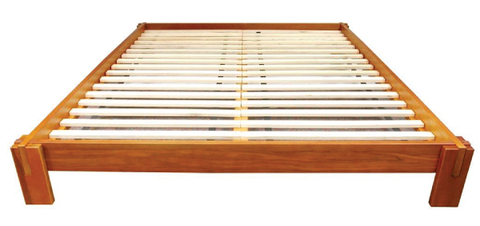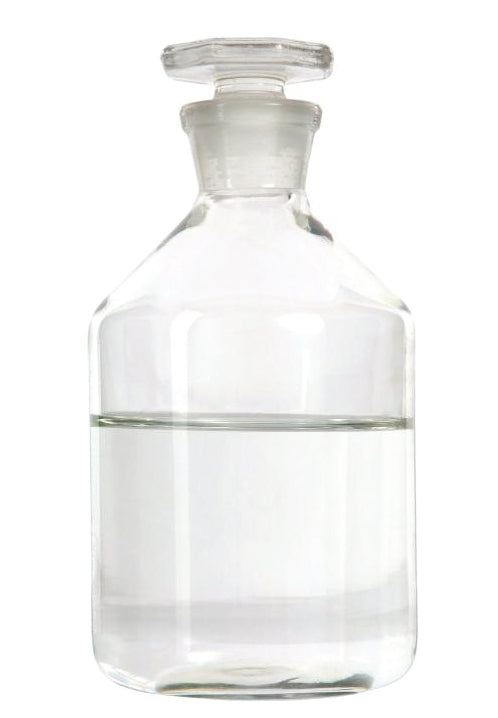
All Soaring Heart organic mattresses, organic futons, and organic shikibutons require the use of a Organic Mattress Protector. The average person loses about a pint of moisture a night. Mattress pads absorb body oils and moister, preventing them from soaking into your mattress. One of our protective and washable mattress pads will double the life of your mattress, keeping it clean and dry for years to come.
Our 100% Cotton Mattress Protectors are absorbent and sturdy enough to last you for years, while our Organic Wool Mattress Protectors have the unique ability to absorb and disperse water vapor, wicking it away from the body while actively repelling liquid, so your bed will be doubly protected.
For use in cribs, toddlers' beds, for people with pets who sleep on the bed, or for customers who enjoy eating in bed, we recommend using both an organic wool mattress pad and a cotton mattress pad to protect against accidents. The cotton absorbs the spill as the wool repels what passes through.
Wash your mattress pad every other week or whenever you wash your sheets.

All Soaring Heart mattresses must be kept on a slatted frame or foundation, in accordance with our Warranty. Slatted frames and foundations allow for proper ventilation, creating air flow underneath the mattress, evaporating moisture, and avoiding condensation.
Our bodies warm up our beds at night, but solid surfaces, such as floors, solid plywood or boat berths do not warm up at the same rate, which results in accumulation of condensation that cannot fully dry out. This not only leads to compaction, shortening the life of your mattress, but to the possible growth of mold and mildew.
All mattresses, even the newer "no flip" mattresses, should be flipped periodically. Flipping a mattress increases its lifespan and sustains its comfort. If a mattress is never flipped, the area of the bed where you sleep will compress and form body impressions over time. When not flipped, a mattress that is supposed to last for 20 years might only be comfortable for 5-10.
This is the reason why mattresses with sewn on mattress toppers or pillow tops can be an issue. A mattress topper needs to be flipped even more than a standard mattress due to its soft fibers and materials (which makes them less resistant to compression). Often when people have a mattress that is no longer comfortable, it is because the top layer has compressed; the actual mattress is still perfectly fine.

Flip your mattress topper every other week or whenever you change your sheets. This will allow it to wear evenly and resist body impressions.
The latex portion of your mattress, what we refer to as the "support layer," is very resilient and long lasting. Latex doesn't compress as fibers do, so there is little reason to worry about body impressions. Because of this, your latex support only needs to be flipped and rotated every three to six months to allow the cotton ticking underneath your mattress topper to have equal time exposed to air.
Innerspring mattresses need to be flipped once a month. Steel springs compress very slowly, but over time and with constant use, the springs will lose some of their resistance. Flip your mattress so that it can wear evenly.
To make sure your organic futon or shikibuton wears evenly, flip and rotate your bed at least once every month, and once every week or two in the first two months of use. This will discourage body impressions and increase the life of your mattress.
We've said this before, but it's worth mentioning again: do not put your futon directly on the floor for extended periods of time. Even if you don't see mildew or mold forming, it can be happening inside the mattress. Moisture exposure also accelerates compaction, reducing the lifespan of your organic futon or organic shikibuton.

Sometimes accidents happen. When the unforeseen occurs, the best thing to do is spot clean the case with water and mild detergent. Then liberally saturate the soiled area with rubbing alcohol and allow it to dry. The alcohol will sanitize the area, and it will help evaporate the spill faster than it can penetrate the mattress.
Mold and mildew—mold, in particular—have the potential to cause a number of health problems and can affect each person differently. Allergic reactions are most common, but mold can also cause asthma attacks and severe illness in sensitive individuals.
Mold or mildew can grow in a bed if that bed does not have proper aeration, thus leading to moisture accumulation. To make sure your mattress is properly aerated, keep mattress on a slatted frame or foundation. Slats allow air to flow underneath the mattress, reducing condensation and allowing any moisture to evaporate. Using a Soaring Heart Mattress Pad will also reduce any moisture buildup.
Unfortunately, once mold or mildew is present, it's often too late to fix. However; if there's just a trace of mildew or mold starting to appear, there are several steps you can take to try to save your bed.
Dust mites are one of the most common sources of household allergens. They are microscopic creatures that live in any soft material, (upholstery, carpet, or stuffing) and survive by eating dead skin cells. The mites' excrement contains proteins that can cause allergic reactions. Dust mites love beds where they have a warm, damp environment and plenty of food.
Latex and wool are both unsuitable environments for dust mites. Any mattress you purchase from Soaring Heart that contains wool or latex will be naturally dust mite resistant. For all cotton futons or for people who are particularly sensitive, we recommend frequent vacuuming with a HEPA filter-equipped vacuum cleaner. Making sure your home environment isn't too humid, and removing cloth items from your bedroom will also go a long way towards reducing dust mites. Finally, regularly wash your sheets in hot water.